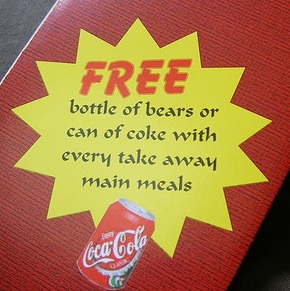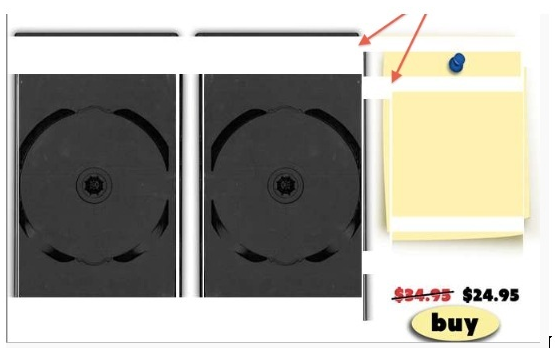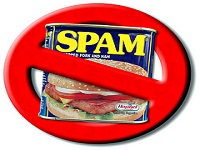Effective Email Marketing Tips For Small Businesses
There was a time, in the late 2000’s, when many internet marketers turned their backs on email marketing.
They believed that email marketing was old fashioned, and many predicted that social media would completely usurp email and eventually kill it off.
However, more than half a decade later, email continues to be one of the most crucial and powerful online marketing methods.
One of the biggest advantages of email marketing is that it allows you to engage new, existing and loyal customers at the same time, as well as speak directly to each type of customer individually.
As a way to let people know about your business, build relationships and convert leads into paying customers, email is an unrivaled marketing method.
Email can be so powerful that many entrepreneurs have managed to build successful businesses just off the back of their email lists.
A whopping 44% of people made more than one purchase in the last year based solely on a promotional email, and 7 in 10 people said they have made use of a coupon or discount they found out about from email marketing.
As great as these statistics sound, really nailing your email marketing strategy is a lot harder than it looks, and many business owners feel frustrated that their email campaigns don’t have the impact they hope for.
If you feel that your email marketing could be doing much more for your business, these 13 email marketing tips are sure to give your emails the boost they need to start converting your email list into a money-making asset.
1. Choose Your Email Service Wisely

Our first email marketing tip is one of the most essential.
The service you use to send out marketing emails can have a huge effect on how well your emails perform.
Top services give you a whole range of tools which will allow you to track statistics and analytics data so that you can make informed improvements to your email campaigns.
More importantly, many of the lower-end free email services have been overused by spammers, to the point where the services themselves are associated with spam email.
This means that, even if you are sending out completely ethical emails to people who actively want to receive them, your emails may be caught in spam filters just because of the service you are using.
Switching from one email marketing service to another can be a huge pain, as many reputable email services require your subscribers to “opt-in” to receive your emails.
They do this to make sure that spammers can’t use bought lists, which in turn means that the service retains its trust with email clients.
Therefore if you have a pre-existing mailing list, it can be very difficult to import it into another email platform, even if your subscribers opted in with your previous service.
Therefore, it is of fundamental importance that before you start an email campaign, you find a great email service which won’t hinder your emailing efforts.
Grow recommend:
Mailchimp is another great email service, which is ideal for businesses with smaller budgets and mailing lists. With Mailchimp, you can get a basic model absolutely free for mailing lists which contain less than 2,000 people. Like Aweber, it gives you a number of tracking options and free email templates.
Sign up for Mailchimp here.
Aweber is widely considered to be one of the best email marketing services out there. It is extremely powerful and flexible, but is also very user-friendly. It comes with loads of great looking email templates too, which means that you can easily create professional looking marketing emails without any coding knowledge. You can get a month long trial for just $1 by clicking here.
2. Acquisition
Who you contact is just as important as what you say.
You could have a mailing list of a billion people, but if those people aren’t interested in what you have to say and, crucially, what you have to sell, your email marketing won’t work.
This is why it’s important that you attract the right sort of people to your email list, from the get-go.
The best way to do this is with opt-in email forms, where people who are actively interested in your product or service can sign up to your mailing list and learn more about your product and industry.
These kinds of people are the Holy Grail for email marketers, as they are already actively interested in what you have to say and are therefore much easier to convert into customers.
Too many business owners ignore this step and just buy lists of emails from third parties. This is almost always a terrible idea, and here’s why:
- Email lists which are for sale have already been sold to other businesses. Every email address on the list you buy will have already been spammed by (potentially) hundreds of other businesses. As a result, the email lists you buy will likely contain loads of abandoned addresses.
- Even if the people on your bought list haven’t yet abandoned their email, they are going to be extremely spam weary and are therefore less likely to open your email
- Selling your product by email is all about building trust and relationships with your mailing list. As the old sales adage goes, “people buy from people they like and people they trust”. If your first point of contact with a potential customer is through a random, spam email which they didn’t sign up for, this trust is already broken, and your chances of actually securing a sale will be considerably diminished.
So if you can’t buy a list, how are you actually supposed to go about getting the emails of people who are interested in what you have to say and sell?
One of the best ways you can do this is by putting an email sign up form on your website and offering them something in return for their email. This can be anything, depending on your niche or product, but it has to offer them something of tangible value.
• If you sold luxury confectionery, you could include a prize raffle to win one of your hampers for free.
• If you run a personal fitness training company, you could offer a free online fitness course.
• If you’re selling your expertise, you should consider offering a free eBook, whitepaper or informational product, as it will also demonstrate your expertise.
You should always include these sign-up forms on your website in a place which is highly visible, but not too intrusive. Your right-hand sidebar is an ideal place for a sign-up form, as is the area directly underneath blog posts and sales pages.
As well as placing your sign-up form in a visible place, make it easy for people to sign up.
Obviously, the more information you have about a lead, the better.
However you must remember that people are easily turned off if they need to basically write their life story to sign up for an email newsletter.
Unless you’re in a very specific niche, and are trying to sell to a specific type of person, keep it simple.
3. Segment Your Customers

All customers are created equal, but some customers are more equal than others. You’re going to have many different people on your list, including:
• people who have already bought your products
• regular buyers
• people who are yet to buy anything
It would obviously be wrong to email these clients the same sort of emails, as for each type of customer you will have a vastly different goal and will be trying to cultivate a different sort of relationship.
This is why is it is so important to segment your list, so that you can send emails to different demographics individually.
For example, you might want to offer a 20% discount to new customers, or let existing customers know about a referral scheme they can participate in.
It is also important that the people receiving your emails feel that they are being spoken to directly. No one likes to be thought of as just a statistic on your Analytics report, so make sure that the emails you send out speak to each segment individually.
All good email marketing platforms allow you to do this with ease, and it is something that is worth doing from the beginning, as it is easy to lose track of which email addresses should belong in each segment.
4. How Often Should You Send Out Emails?

This is one of the most common questions people ask when it comes to email marketing, but unfortunately there is no hard and fast answer.
Marketers have done all sorts of in-depth studies and surveys in an attempt to discover exactly what the best email frequency is, and results have differed from study to study, so it is difficult to give a concrete answer.
In essence, the number of emails you send out should be decided by how much you’ve got to say, and how important what you have to say is to your mailing list.
You want your list to be as engaged as possible, for as long as possible, so it’s important that you ensure that each email you send out will be valuable to your mailing list.
The most important thing to each person on your list is themselves. Therefore, your emails should be written around how it benefits your list.
Out of all the email marketing tips described in this article, pay most heed and attention to the above. It is critical and here’s why.
Too many businesses just blast their subscribers with hard sale after hard sale in their emails, when the most important thing is that your list of prospects want to open your emails.
Therefore, you should be very wary of sending out low-quality filler material, just for the sake of sending an email to hit a certain email frequency.
If your business has an active blog and posts new articles numerous times a week, you might want to send out a bi-weekly email, letting your list know about what they can learn from your new content. Read more about the benefits of blogging for business here.
Conversely, if your business doesn’t have a content strategy, reserve your email marketing strategy for just the important stuff – special offers, referral schemes, very important news.
There is nothing worse than receiving a newsletter from a business which has nothing to say – it wastes everybody’s time and makes your list less likely to open up future emails.
When deciding on email frequency, it’s also important to identify your key goals.
Each email campaign should have a solid goal in place, and everything about your emails should be geared towards achieving that goal.
Do you want to use email to:
• Increase readership and engagement with your blog?
• Create a referral scheme to generate new sales from loyal customers?
• Convert your mailing list into active buyers of your product?
These are questions you need to answer before you even begin writing your first email.
5. How to Craft the Perfect Email
As email clients and coders have gotten more advanced, marketing emails have become increasingly sophisticated, with images and snazzy design quirks.
However, snazzier is not necessarily better.
When designing and writing emails, the simpler the better. Most email clients still don’t open images from unknown senders, which means that if you stuff your marketing emails with images and graphics, most of your list will just see this.

Remember, when trying to email people, you’re in a fight for time against everything else they’ve got to do that day.
No one has time to read long, convoluted emails and no one has the time to sift through loads of fancy graphics to get to the point.
Feel free to add an image or two, but make sure that if the picture doesn’t load, it won’t affect the email’s core message.
Make your point in the most succinct way possible, and make sure that the call-to-action is extremely visible and straight-forward.
Tell your list what you want them to do in simple, easy to read language.
If within 30 seconds your readers don’t know exactly why you’re emailing them, you’re not doing your job properly.
This goes for the goal of the email as well.
If you want to let readers know about a new blog and a great new special offer, you might be tempted to roll them into one email.
Don’t.
This is far less effective than sending two separate emails at different times.
By concentrating each email around 1 specific call to action, be that “buy this awesome thing!” or “look at these new blogs!”, you will dramatically increase the number of people who actually click through to your website.
6. Subject Lines Dos & Don’ts

Do:
1. Be aware of what phrases can trigger a spam filter.
Words such as “free” or “earn extra cash” have been abused by spammers to the point that just including them in your newsletter can get it stuck in the spam bin.
Think carefully about the kind of words you use in your subject line, and whether any of them could be perceived as spammy.
Good email marketing platforms such as Aweber and Mailchimp will check your subject lines for you, but if you aren’t with a premium service, you can check your subject line with this free spam checker
Make sure that the subject line lets the readers know what they’re in for. Sometimes, a cryptic subject line, such as “Could this headlines technique double your click-through rate?” can boost open rates.
However, even these teaser subject lines still let the readers know what they’re going to learn
2. Keep your subject lines short and to the point
3. Personalise your subject lines.
Including the recipient’s name is nothing ground-breaking, and no longer has much of an effect on open rates.
However, you can also personalise your subject lines by including other data you have on them. Use products they bought, info-products they have downloaded, or reviews they have left to personalise emails
Be clear about who you are, make sure that you include your name and business in the “from” field.
Don’t:
1. Use the same subject line for each send out.
Too many email marketers use the same subject line again and again, something like “Monthly news round-up” or “this week’s great offers”. To keep your list engaged, you need to keep your content fresh and new, so reflect this in your subject lines
2. SPEAK IN CAPS AND USE TOO MUCH PUNCTUATION!!!!!!111!11!
Your subscribers want value, not to be yelled at from their screens.
3. Hard sell in your subject lines.
This is email marketing, not The Wolf of Wall Street.
7. Send It From a Real Person

Email marketing is all about developing a personal relationship with your list, so it’s important that your emails come from a real person, as opposed to “sales@yourbusiness.com” or “noreply@yourbusiness.com”.
Big corporations are particularly guilty of this, one example being British Gas, who send all their email correspondence from a no-reply address and don’t have an unsubscribe option.
Don’t make the same mistake as them, make sure that your emails come from a real person, and that all replies to that address are monitored.
As we’ve already said, people buy from those they trust.
Sending out emails from one specific person, will make your leads more likely to open your emails and do business with you.
It is even better to include your picture, signature or nickname with your sign off at the bottom.
Make sure that all replies also go to an email address which is constantly monitored, so that if anyone wants to know more information, they can contact you directly.
As an added bonus, tests have shown that emails from an actual person are much less likely to get caught up in a spam filter than those from generic or anonymous email addresses.
8. Test Extensively
Lots can go wrong when doing email marketing, and as your list continues to grow, this means that any mistakes can be very public and very embarrassing. Sending an email full of typos and errors is bad enough when you’re just emailing one person, but imagine how it would feel if you sent it out to 3,000 people!
Before you send out an email, proof-read it until you are 100% sure that everything is correct and as clear as possible for your list to read.
Read it from your recipient’s perspective – is all the information included and written in a way which is easy to read and easy to understand?
If you’re coding up your own html emails, be sure to check your code using the W3 Schools html validator to make sure that there are no mistakes.
When you think that your email is ready to go out, send out a couple of test emails to dummy accounts which you have set up.
It is a good idea to create an account with as many email clients as you can, but at a minimum make sure you have test accounts set up with Gmail, Yahoo Mail, Hotmail and AOL mail and ensure that your email displays correctly in each of them.
It’s also important that you check how the email looks on a number of different mobile devices, if possible.
9. Create an Autoresponder Series
An email autoresponder is a set of emails which are sent out automatically according to a certain trigger event.
This is one way you can use marketing automation to simplify processes in your business.
For example, you can set up an autoresponder email to go out as soon as someone signs up to your mailing list.
You can set up a number of these autoresponders, so that each new subscriber gets a series of emails.
You can use this to introduce them to your company, your message and what you can do for them, as well as using the autoresponder to direct them to your website, social media pages and other places where they can engage with you and your brand.
These initial series of emails are crucial to building your relationship with prospective customers, so it is very important that you think hard about what you want to say.
Your subscribers are going to be at their most engaged in the days and weeks after they’ve signed up, so use this time wisely.
Too many marketers use these initial points of contact to try and do a hard-sell, which can end up doing more harm than good by alienating new subscribers very quickly.
Instead, use these first few emails to start building trust by offering things that will be of value – send them your very best content, or exclusive how-to articles which are only available to email subscribers.
For example, a fitness expert or personal trainer could set up an email course along the lines of “10 steps to achieving your beach body” which is delivered across a number of emails, sent daily or weekly.
Think about what you can do to grab the attention of new sign-ups and make sure that they stay engaged in the future.
10. Measure Your List’s Response over Time
It’s important to remember that your list of prospects is totally unique. What works for one company might not work for you and your business, so it’s important that you learn how best to email your own list through trial and error.
Keep a spreadsheet which covers every email you send out, showing the:
- Number of new subscribers
- Number of people who opened the email
- Percentage of list which opened the email
- Number of people who clicked a link in the email
- Percentage of list who clicked a link in the email
- The number of people who unsubscribed
By doing this, you can get a better idea of what your list enjoys, and what they want to see more of, as well as what your list doesn’t enjoy.
By keeping track of this, you can start to tailor your emails to suit exactly what your list enjoys, and therefore boost engagement.
It’s also worth monitoring how your email subscribers behave once they have clicked onto your website from their email.
By using the Google URL builder here, you can track what your subscribers do on your website through Google Analytics, so you can see how long they spent on your website, how many pages they viewed, whether they bought anything and other revealing information.
By keeping an eye on your website analytics, you can see if your emails convert subscribers into paying customers.
Click here for a full guide to the new Google URL Builder.
11. Don’t Sweat the Unsubscribes
This is one of those email marketing tips which don’t get the attention it deserves.
Although you want to hang on to as many subscribers as possible, it’s not worth worrying about people unsubscribing from your list. In-fact, it can even be a cause for celebration!
Who would you rather try and sell to:
Person A – someone who is totally uninterested in your product and has no need for your product.
Or
Person B – someone who is actively interested in your product and what you have to say about it?
Unless you’re a masochist, it would obviously be person B, and these are the kind of people you want on your list.
If someone unsubscribes from you it means that they are no longer interested in what you have to say and what you have to sell.
In all likelihood, it probably has nothing to do with the quality of your email marketing – perhaps they no longer want your business consultancy because they no longer run a business.
Perhaps they no longer want your fitness advice because they have re-discovered their deep affection for double-chocolate ice cream and binge-watching YouTube videos!
As time goes on, you will need to “cleanse” your list, which is to say you will need to sift through your subscribers, and work out which emails are no longer used and who hasn’t opened your emails for a long time.
This is important because it will vastly improve your open rates, which will give you a better indication of what specific emails your subscribers are engaging with.
So therefore, don’t think of an unsubscribe as a heart-breaking digital rejection, but see it as more of a natural list cleansing procedure, which will save you time and improve the overall “health” of your list.
That said, if you notice a sudden spike in the number of unsubscribes after a certain campaign or email, you will want to pay close attention to what you might have done which could have caused people to unsubscribe, and then make sure that you don’t do it again.
12. The CAN SPAM act

Inboxes everywhere will be happy to know that there is legislation in place all over the world, including the United States and Europe, which makes certain kinds of spam email illegal.
Spam offenders in America can even get charged up to $16,000 by the CAN SPAM act.
Fortunately, staying on the good side of these spam acts are very simple. By following these 7 guidelines, you can make sure that your emails are a spam-free as possible.
1. Don’t lie in your subject line and header information. Don’t pretend to be someone else, or try and fool subscribers into opening your email by writing a misleading subject line
2. Include your domain name, company name and identifying information, including business address and contact information
3. If you are sending out a sales email, make sure you identify it as an advertisement
4. Include an unsubscribe link, and make it very easy for people to unsubscribe from your list
5. Don’t make your unsubscribe link the same colour as the background, half a pixel tall or any other underhand way to prevent unsubscribes
6. Don’t make your subscribers go on an internet wild goose chase to remove themselves from your list
7. Once someone has unsubscribed, make sure that you remove them from your list promptly and that they don’t receive any further correspondence
13. When Is The Best Time to Send Emails?
Internet marketers love testing things and collecting data. As a result there have been literally hundreds of studies done in an attempt to find out when the optimal time to send an email is.
For years, conventional wisdom told us that it was best to send your emails on a Tuesday, Wednesday or Thursday morning, at around 9am, when people are checking their email at work.
However, as we’ve already said, your list will always be unique, and what works for most people, may not work for you.
For example, if the majority of your customers are freelancers or business owners, there’s no reason why they would be checking emails in the morning during the middle of the week. They work for themselves, and therefore any notion of a 5 day working week is probably redundant.
Conversely, if you run a B2B IT company, you’ll be dealing with business buyers, who will most likely be working 9-5 Monday to Friday, so they would be unlikely to be checking their email on a Saturday afternoon.
You should already have a very good idea of who your customers are, how they behave and what they want, so use your insight to make an educated guess about when they are most likely to be online and use this as a starting point.
Take advantage of all 13 email marketing tips and experiment with a wide range of times for sending out emails.
Finally, keep track of all the relevant data so that over time you can work out the optimal time to send emails to your mailing list.
Discover
The 12 Marketing Secrets of Fast-Growth Companies
Find out what they do to achieve outrageous business success

Get your free copy

 By
By 

nice post!! i am into mailing lists business and your article is big help…